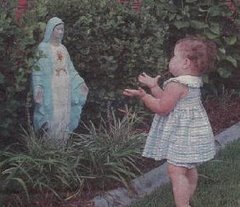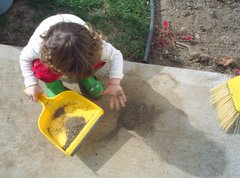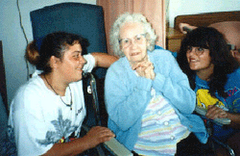 The chicken house was part of a co-op farm that had been established a long time ago. In the past few years, the farm had lost a significant number of chickens to the foxes that lived nearby. Fox hunting had been outlawed because of an aversion of management to guns, and so the foxes began to increase in numbers and ate well on the tender flock.
The chicken house was part of a co-op farm that had been established a long time ago. In the past few years, the farm had lost a significant number of chickens to the foxes that lived nearby. Fox hunting had been outlawed because of an aversion of management to guns, and so the foxes began to increase in numbers and ate well on the tender flock.The fence around the chicken house had formerly been a sturdy steel wire mesh that kept the chickens in a safe enclosure, but management had failed to repair the fence and it offered little protection against the foxes. Some of the caretakers claimed that it was now better because the chickens were happier and had more room to roam without the tight fence.
Some of the chickens also died of a strange disease that settled in the small chicken brains--especially those of the hens and pullets. This disease caused the girlie birds to flap their wings a lot and pretend they were roosters. Many did not see this as a problem, claiming that more roosters were desirable because the new 'roosters' did not lay eggs and so could be used for labor. However, fewer baby chicks were seen in the chicken yard.
It wasn't until the
 foxes had eaten many of the chickens that several chickens with larger brains (who were unaffected by the strange brain disease) met in a corner of the chicken house. Hennety Hen cried that all her babies had been eaten by the foxes. Other chickens were afraid because some of the foxes had seduced some of their friends. Robby Rooster complained that the chicken house now looked very poorly in comparison with the old days when he was a young rooster. He could remember the days when he and the other roosters sang their beautiful songs every morning, but the songs had changed because the crowing interfered with management sleeping late.
foxes had eaten many of the chickens that several chickens with larger brains (who were unaffected by the strange brain disease) met in a corner of the chicken house. Hennety Hen cried that all her babies had been eaten by the foxes. Other chickens were afraid because some of the foxes had seduced some of their friends. Robby Rooster complained that the chicken house now looked very poorly in comparison with the old days when he was a young rooster. He could remember the days when he and the other roosters sang their beautiful songs every morning, but the songs had changed because the crowing interfered with management sleeping late.Some of the chickens believed they had to leave their dilapidating chicken house and reoccupy the oldest chicken barn which had been abandoned a couple of years before. One old rooster, a well-respected leader, led some of the chickens to the tall barn that had been sturdily constucted many years before. They quickly discovered it still had a tight fence around it; moreover, the granary was full of food. Because the old barn was far enough away from management, the songs of the roosters once again welcomed the morning sun as the chickens ate heartily from the granary.
Management was very unhappy with the outlaw chickens that had settled in the old chicken barn, but then they decided to offer the outlaw chickens a deed to the old property. When the deed was examined closely by some lawyer chickens, there were a few who claimed the deed was not what it appeared to be. So the outlaw chickens decided not to accept the deed. Still, the outlaw chickens thrived and began to discuss how their good fortune could be shared with their relatives in the poorly maintained chicken house.
New young roosters quickly took the lead in the sturdy old chicken barn. They practiced every day throwing sharp, rotating disks which sailed through the air to penetrate deeply into the flesh of their adversaries. During forays into fox territory, the "Wirds" proved to be a most effective weapon.
Red was the most energetic and hardworking rooster. Rudy was diligent and resourceful, and he also had had many successful fights with foxes using "Wirds."
 The only problem wa
The only problem wa s that Red and Rudy were both roosters (and hens know how that is).
s that Red and Rudy were both roosters (and hens know how that is).The two roosters had had a few minor tiffs but nothing was serious until the company of roosters in the sturdy chicken house decided to write a new song. Naturally, the two roosters had slightly different opinions on how the song should be written. The story gets a little complex, but Red from his post high on the barn beam became agitated and accidentally began to drop "Wirds" on Rudy. Red didn't really mean to injure Rudy, and Rudy attempted to deflect the "Wirds" but to no use.
Rudy was cut by flying "Wirds" and all the chickens thought it was a minor injury. Unfortunately, the injury was very real, and left significant wounds. He no longer felt well enough to fight the foxes with the strength he had had before.
The moral of this story is: Don't use flying "Wirds" on your friends. Friendly fire in Desert Storm killed 17 percent of our troops, while in Vietnam, fratricide killed 10 percent of our own people.










